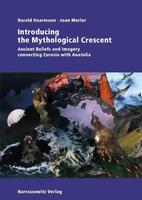|
|
more titles of the subject:
Download:
Please note: With adding digital Products to your cart
the payment will be handled via PayPal. The download will be provided after the payment is confirmed. There is a broad cultural region with related traditions of mythical beliefs interconnected by long-term contacts during prehistoric times. This area - called here the “Mythological Crescent” - is a zone of cultural convergence that extends from the ancient Middle East via Anatolia to southeastern Europe, opening into the wide cultural landscape of Eurasia.The very old interconnections between Eurasia and Anatolia are explored in this study for the first time. In a comparative view, striking similarities can be reconstructed for the ancient belief systems and the imagery of both regions which suggest convergent cosmological conceptualizations of high age. The beliefs and ritual practices of the indigenous peoples of Eurasia are rooted in the shamanism of the oldest cultural layers of the Palaeolithic. Although socioeconomic development in Anatolia was markedly different from cultural evolution in Eurasia, the hunters and gatherers in Anatolia who adopted sedentary lifeways did not entirely lose their ancient beliefs during the transition to plant cultivation (in the eighth millennium BCE). Archaic beliefs and imagery fused with new practices and innovations during the development of agrarian societies. One diagnostic motif which was perpetuated from the Palaeolithic to the Neolithic and beyond is represented by the production of female figurines (statuettes). Their significance for communal life has been linked to spiritual concepts of the continuity of life, the vegetation cycle, and the protection of the natural habitat of all living things as recorded in myths and historical folk art of Uralic and other peoples. The bear plays a significant role as a mythical animal in the imagery of Eurasia whereas this motif was lost in Anatolia during the transition from antiquity to the Middle Ages.
|
|||||||||||||||||||||||||||||||||||






